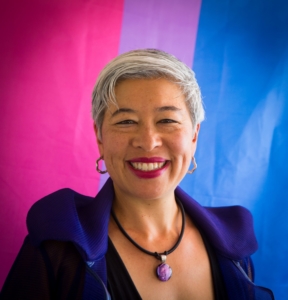Bringing Attributes of Civility and Common Ground into the Workplace
Public discourse has grown increasingly polarized in recent years, creating divisiveness that has consequences in government, in communities, within families, on social media, and of course, within organizations and workplaces.
Political conversations between colleagues are fraught with unintended consequences: uncomfortable or hostile relationships, feelings of exclusion, or alienation, if leadership of an organization takes a stance on an issue that they disagree with.
In addition to tension, this causes an erosion of employee trust, which is the foundation of a productive and cohesive workplace. Employees are increasingly engaging in political conversations at work, and disagreements are impairing their ability to work cooperatively with colleagues with whom they disagree. Internal messaging that reveals a bias creates an “Us vs. Them” mentality within the organization. Employees need guidance to navigate these conversations in a respectful manner, following messaging that starts at the top. The bottom line—in addition to the financial one—is that top officers need to partner with supervisors up and down the org chart to ensure that internal messaging and leadership promotes unity based on shared goals and values rather than points of contention.
Common Ground Committee (CGC) is a nonprofit organization that encourages action reducing polarization by bringing together prominent leaders with opposing views in public forums to find common ground. This conversation is as needed in the workplace as it is in government chambers, the media, and street corners.
To this end, CGC has created the Ten Attributes of a Common Grounder, guidelines for conducting useful, nonpartisan conversations among disagreeing parties to help them converse more peacefully and productively. They are applicable to all kinds of environments and can be used by an organization’s top officers to promote an atmosphere of trust and respect within the workforce, and to ensure that internal messaging brings light, not heat, to discussions where colleagues disagree.
IDENTIFY AND SET ASIDE PERSONAL BIASES.
We all carry personal beliefs, ,biases and opinions. As you approach a conversation, be aware of yours. Be willing to test them against new information and recognize when they
may be closing your thoughts to what the other person is saying.
COMMIT TO SEEK AGREEMENT, PROGRESS AND SOLUTIONS.
Approach discussion or debates with an objective of trying to find common ground and solutions, not win arguments. Use a “let’s work it out” attitude.
LISTEN FIRST TO LEARN PERSPECTIVES AND EXPERIENCES.
It’s hard to work with someone if you aren’t listening to them. It’s also difficult to engage in a dialogue until the other person knows you have heard them. Active listening establishes the foundation for real communication. It provides the opportunity for the “I never thought of it that way” moment.
DON’T ASSUME, BUT SEEK TO UNDERSTAND MOTIVES AND INTENTIONS.
Understanding the motives and intentions behind someone’s position is necessary to finding common ground. The challenge comes when we assume, often erroneously, that we know those motives and intentions because we have accepted commonly held beliefs about people who take that position. Don’t fall into that trap. Instead, ask the questions that clarify the person’s true motivation.
USE AND ACCEPT FACTS.
Rather than emotional arguments, bring verified facts to the conversation. If you are presented with verified facts, accept them, even when they don’t fit your narrative. It’s fine to examine
them carefully and to see if something is missing, but don’t reject them dogmatically.
SEEK OUTCOMES ALL CAN LIVE WITH BUT DON’T COMPROMISE PRINCIPLES.
Don’t go into a discussion with predetermined expectations of the outcomes. Be prepared to be flexible and work to find an approach that addresses the concerns of all parties (including yours). But don’t feel obligated to go along with something that you feel violates your principles. Be prepared to “agree to disagree.”
ACCEPT THAT GOOD PEOPLE MAY DISAGREE.
Because people have different experiences and viewpoints, they may not share your values. It’s not necessary to always agree on what’s important or why. But it is crucial not to
equate a difference in values with whether a person is good or bad. Don’t let arguments divert you from appreciating your fellow person. If someone is unreasonably dogmatic in a
way that violates your principles, it may be best not to engage.
STAY RESPECTFUL.
Watch what you are saying and how you are saying it so that you don’t degrade the quality of the conversation. Eliminate pejoratives from your vocabulary. If your temperature starts
to rise, take a breath, and shift to a different line of discussion.
RESIST DEMONIZING.
There are two points to be made here:
• Name-calling and personal attacks on groups and individuals are currently part of everyday political conversation. Don’t succumb to the temptation to use these methods.
• Watch your own thinking. When you hear these types of attacks, don’t accept them. The more you do, the harder it will be to engage with others.
DE-ESCALATE HOSTILE SITUATIONS.
• This is about controlling your thought and thereby your actions.
• Be alert to everyone’s temperature. It may be best to shift to a different line of discussion or a totally different topic before people become angry with each other.
• If you find yourself in a hostile situation, don’t contribute to the hostility. Identifying and expressing what you appreciate about the other person’s ideas and intent can help. As with attribute 7, don’t let arguments — even heated ones — divert you from appreciating your fellow person.
Common Ground Committee (CGC) is a non-partisan, citizen-led organization that inspires action on polarizing issues by bringing prominent leaders with opposing views together in public forums to find common ground. Since its founding in 2009, the organization has hosted dozens of notable panelists including John Kerry, Condoleezza Rice, Michael Steele, and Donna Brazile to find points of consensus on issues ranging from race and income inequality to America’s role in the world.






















